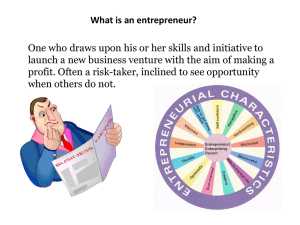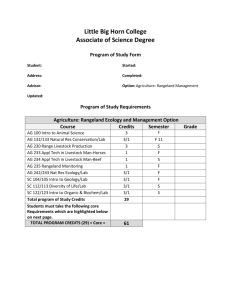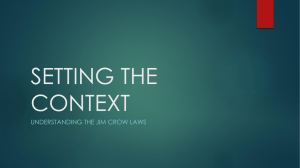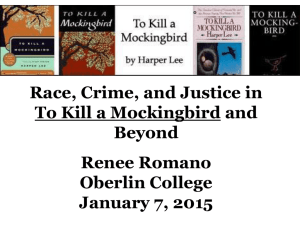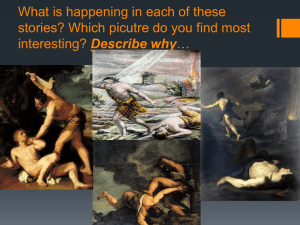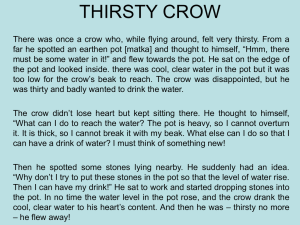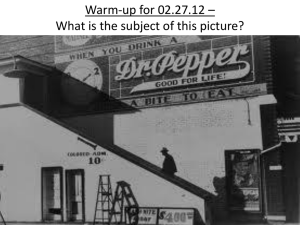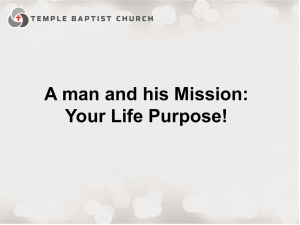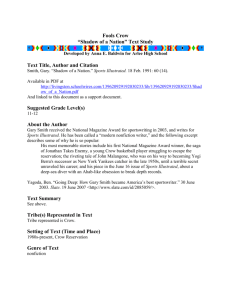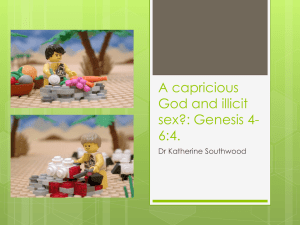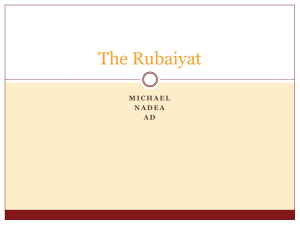Introduction to Shakespeare
advertisement
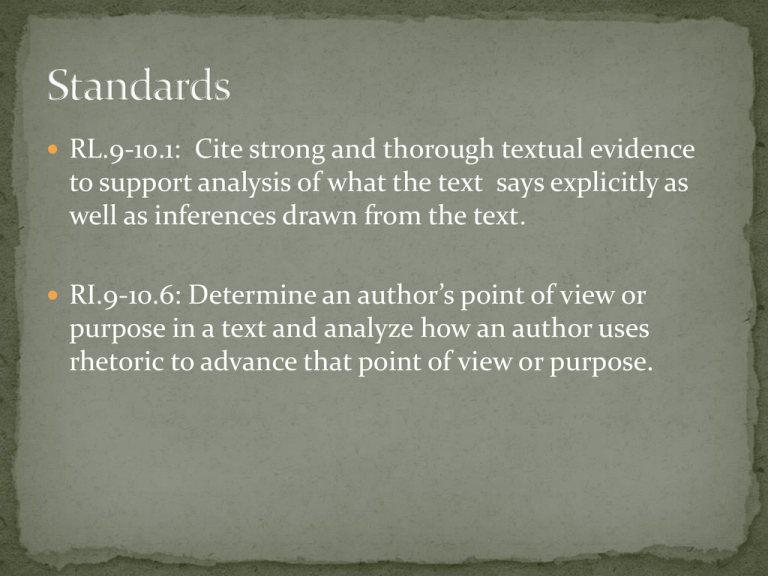
RL.9-10.1: Cite strong and thorough textual evidence to support analysis of what the text says explicitly as well as inferences drawn from the text. RI.9-10.6: Determine an author’s point of view or purpose in a text and analyze how an author uses rhetoric to advance that point of view or purpose. What does the author/narrator say? Think about descriptive adjectives, are there more positive or negative adjectives, and what are they describing (the target). What does the character feel? Think about emotional words that are used in the text. You will have a target, so determine how the author feels about each target. What message is the author passing along to the audience? Say? --- What is the author literally/explicitly saying Feel? --- What can the reader Infer I I What is the universal message or theme? Point of View Voice Bias Theme Message Thesis Tone Many people are under the mistaken impression that crows were viewed as harbingers of death in Native American cultures, but in fact, that is not true at all. We do not know of any Native American tribe in which crows were seen as omens of death. Indeed, just the opposite, seeing a crow was (and still is!) considered good luck by many tribes. Only a handful of people, including that of some tribes of Native America, have viewed these dark emblems in any kind of positive light. Many tribes, in contrast to so many others, viewed them as guides meant to help mankind along his journey in both life and death. A few viewed them as those lucky enough to be granted the power to see the soul as it leaves the human body on its way to its final resting place. Other tribes view these birds as messengers who have shared the secrets of The Great Spirit with his people. Many Native American legends deal with the crow or raven as the helper of mankind, rather than as a trickster or a bad omen. The bird is often associated with the creation as well as with helping mankind learn how to survive. Bible Story: According to the Book of Genesis, Cain and Abel were the two sons of Adam and Eve. Cain is described as a crop farmer and his younger brother Abel as a shepherd. Cain was the first human born and Abel was the first human to die. Cain committed the first murder by killing his brother. Commentators have typically assumed that the motives were jealousy and anger. Although the Cain and Abel story is found in the Quran, the text refers to them simply as the sons of Adam and neither of them is mentioned by name. The biblical account describes the Israelites being led by Joshua and crossing the Jordan into Canaan where they laid siege to the city of Jericho. There, God spoke to Joshua telling him to march around the city once every day for six days with the seven priests carrying ram's horns in front of the ark. On the seventh day they were to march around the city seven times and the priests were to blow their ram’’s horns. And Joshua ordered the people to shout The walls of the city collapsed, and the Israelites were able to charge straight into the city. The city was completely destroyed, and every man, woman, child and animal in it was killed by Joshua's army by God's command. Only Rahab and her family were spared, because she had hidden the two spies sent by Joshua. After this, Joshua burned the remains of the city and cursed any man who would rebuild the city of Jericho would do so at the cost of his firstborn son. Revelation 6:8 And I looked, and behold a pale horse: and his name that sat on him was Death, and Hell followed with him. And power was given unto them over the fourth part of the earth, to kill with sword, and with hunger, and with death, and with the beasts of the earth. The Four Horsemen of the Apocalypse are described in the last book of the New Testament of the Bible, called the Book of Revelation of Jesus Christ to Saint John the Evangelist at 6:1-8. The chapter tells of a "'book', or 'scroll', in God's right hand that is sealed with seven seals". The Lamb of God, or Lion of Judah (Jesus Christ), opens the first four of the seven seals, which summons four beings that ride out on white, red, black, and pale horses. Although some interpretations differ, in most accounts, the four riders are seen as symbolizing Conquest/Pestilence, War, Famine, and Death, respectively. The Christian apocalyptic vision is that the four horsemen are to set a divine apocalypse upon the world as harbingers of the Last Judgment. Working with a partner, go through “Crow Testament” and search for instances of symbolism. In stanza 3 and 4: What does the Crow symbolize? The Crow God? The Crow Bible? What does it mean that the Crow God looks exactly like a Crow? How would one worship oneself. In your group, read through Sherman Alexie’s poem, “Crow Testament” and respond to the following prompts in your Cornell Notes. 1.List at least 4 topics Sherman Alexie addresses in his poem. 2.Identify one stanza from the poem that you feel best reveals the main idea of the poem (by underlining the text) 3.Explain what the meaning of this stanza is in your own words... 4.What does it reveal about the author’s belief regarding the Native American experience? When all groups are finished, the class will compare the groups’ answers and vote for the best one.
